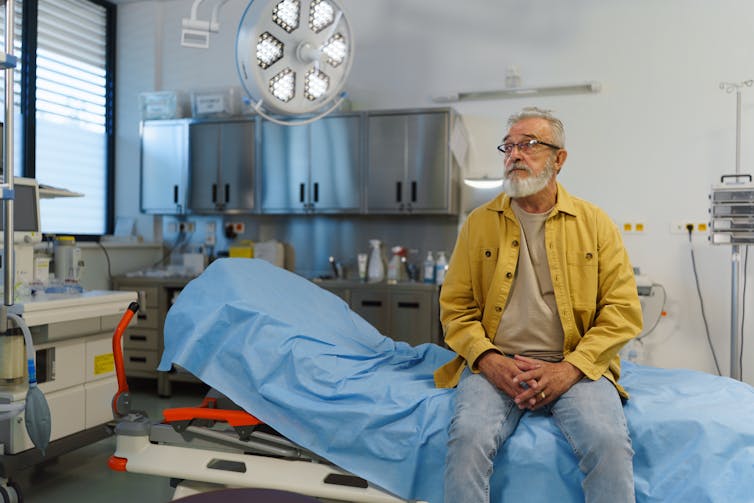Radostina Purvanova, Drake University and Alanah Mitchell, Drake University
It’s been five years since the pandemic lockdowns of 2020 disrupted the traditional office workplace. For a while, it seemed COVID-19 killed the office.
Companies are now returning to the office in ever greater numbers. As professors who have researched remote work and collaboration for decades, we have our counterarguments. But there are lessons to be learned from what we are calling an “office-forward” approach, where companies are encouraging employees to work from the office most of the time.
Back to (field) work
We studied an office-forward company headquartered in the Midwest with multiple satellite offices across the U.S. before the pandemic, during lockdown, and as it navigated the return-to-office landscape. We embedded ourselves within the company for just over two years and conducted field observations, focus groups and one-on-one interviews with a total of 56 employees. We were struck by how employees talked about their place of work:
“This is my place. I feel very taken care of here.”
“Every time I come in, I feel welcomed.”
“It is such a welcoming place to come back to work every day.”
These comments speak to the positive culture of this company. But they also hint at something really interesting: Employees may see the office space as a welcoming place to be.
This is significant because research across disciplines — from anthropology to organizational science — has shown that people develop attachment to places, not spaces. Think about a house versus a home. A house is a structure; a home is a place of community.
And so, while the office is not a home, we learned that an office-forward strategy can be successful if employers transform their workspaces into workplaces, or into places of community. Here are three transformation tactics we discovered:
1. Provide space for place
Can the office support community? Can the workspace be a workplace?
Our research shows that employees see the office as a positive place when it meets their needs. The more goals people can accomplish in a space, the more attached they feel to it. As one employee told us: “If you want to work independently, there’s a space for that. If you want to collaborate with others, there are spaces for that. If you want to eat lunch with 50 people, you can do that. Or, if you just want to have, like, a one-on-one, you can do that as well. There is flexibility, just depending upon your mood, and maybe what you need to accomplish that day.”
We think this shows the value of redesigning “spaces” as “places” that meet multiple work-related and human needs.
We also documented the importance of providing a workstation for every employee. It’s simple: Humans are territorial. If you can’t put a picture of your family on your desk, you feel stripped of your humanity. An employee shared: “I know a lot of companies make you bounce around. Sounds terrible to me. Here, I have my little cubicle, and I love that.”
Not to mention the huge inconvenience of having to truck your stuff — even your mug and your mouse — to and from the office every day. Desk-sharing is antithetical to place attachment because it treats people like cogs.
2. Pass the place-making baton to workers
People are the ones who turn spaces into places. To accomplish this, some critical mass of people must use the physical infrastructure together.
The company we studied imagined its office as a social — not just a work — arena. It dreamed up all sorts of engagement opportunities. It hosted breakfasts and lunches, had movie nights, invited food trucks and ice cream vans, threw silent dance parties, and more.
Employees told us they enjoyed both “the informal, organic interactions when I go down to get coffee in the morning” and the “energy I feel when there are events in the office.” Infusing social opportunities of all shapes and sizes into the office means people are making memories in the office together. And this means they are building community.
But this company went further. It passed the place-making baton. Employees could personalize the space. One team installed a mini-golf course; another painted a mural on an office wall in the center of the building. Employees used the space how and when they wanted to. Some did walking meetings on the treadmills; others played video games after lunch.
Most importantly, employees hosted their own activities in the office. We don’t just mean baby showers and such; we mean inviting the board of a nonprofit for a meeting at the office or inviting a group of students for an office tour. Turning space-users into place-makers means people develop a sense of shared ownership of the space-turned-place. No wonder we kept on hearing possessive language: “There’s a lot of pride in the fact that this is our place” and “This is a building of the people, to put it in a slogan-y way.” The office had become a place of community.
3. Use technology to create community
Technology is an integral part of the post-pandemic workplace. With increased flexibility, employees aren’t in the office all the time, even in companies with in-person policies. Since 2022 a number of companies – some recent examples include Amazon, AT&T, Tesla and others – have implemented strict in-person requirements, suggesting that technology is disruptive to office community. But technology can be a place-maker. It can virtually extend the sense of community from the company office to the home office.
The company we studied ensured that employees continued to feel a connection to the office when working from home during the pandemic. Executives created videos, human resources staff created newsletters and mailed company swag and treats to employees’ homes, and team leaders hosted virtual events and games to keep everyone connected.
Even after the pandemic, the company built Zoom rooms conducive to hybrid team meetings where all employees could feel present. It created branded virtual backgrounds and added branding to their virtual meeting rooms and software systems to remind of the office. It even hired an intern to post updates on company happenings on the company’s social media channels. The result? We heard this: “I feel welcome in this virtual office, too!”
The prize of it all
Place-making works, but it doesn’t work for everyone. In our research, most employees were what we call “place-attached” before the pandemic. But after the pandemic, some had lost their sense of connection to the office and the sense of community they used to feel there. These place-detached employees felt “I’m just there to be there” and “The touchy-feely is not where I get my value from.” We estimate that about 30% of the post-pandemic workforce at this company now feels disconnected from the company culture and the emphasis on being in the office for work.
But considering how many people discovered during the pandemic that they prefer to work from home, 30% is actually quite a low number.
The surprise – for us, at least – was that about 70% of employees in the company we studied remained attached to their office space in 2025. In other words, 7 in 10 continue to find community in the office. Our research unpacks this abstract concept further: What does “finding community” mean? What outcomes does it translate into?
The answer is that place-attached employees experience intrinsic satisfaction from office work. “It’s like going to the gym,” one employee told us. “It’s hard to go, but the energy here is so much higher.”
They feel more embedded in the company’s social fabric: “Grabbing a cup of coffee, just talking to your colleagues, makes you feel connected.”
They feel more productive: “I feed off other people’s energy in the office.”
They feel seen: “We work hard, but we celebrate each other here.”
And the big one — they derive a sense of meaningfulness and purpose: “Getting into work, it’s like someone needs me, I have a place to go, a place of purpose.”
And so, contrary to our own preconceived notions as remote work researchers about the benefits of remote work, we learned that office-forward workplaces need to be a part of the post-pandemic workplace mix. While some employees value work from home, others value working from the office. What we hope employers learn from our research is that for an office-forward approach to work, workspaces must transform into workplaces, or into places of community.
Radostina Purvanova, Professor of Management and Organizational Leadership, Drake University and Alanah Mitchell, Professor of Information Management and Business Analytics, Drake University
This article is republished from The Conversation under a Creative Commons license. Read the original article.

















































